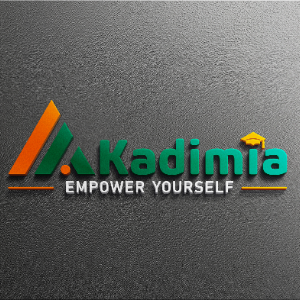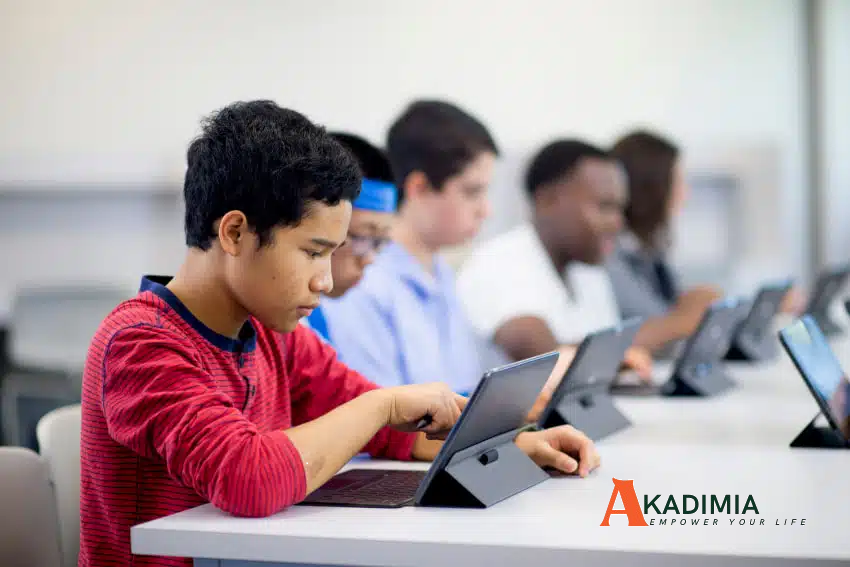Online Learning: Expanding Access and Opportunity
Online learning is one of the foremost nontraditional approaches transforming education today. Leveraging digital platforms, learners can access a wealth of courses and learning materials from anywhere in the world. This method has democratized education, removing geographical and time-zone barriers while also allowing institutions to reach broader, more diverse audiences.
One of the key benefits of online learning is its inherent flexibility. Students can often design their own schedules, reviewing recorded lectures at a pace that suits their learning style and professional responsibilities. This self-directed approach promotes not only academic growth but also the development of time-management and self-discipline skills. Moreover, online platforms frequently integrate interactive components such as discussion boards, real-time webinars, and digital collaboration tools, which can foster community even in virtual spaces.
Despite these advances, online learning poses its challenges. The lack of physical presence can lead to feelings of isolation, and not all learners benefit from the self-motivated, independent nature of online classrooms. Additionally, discrepancies in technology access—a digital divide—can widen educational inequities. Nonetheless, as educators refine best practices and institutions invest in more engaging, interactive elements, online learning continues to evolve into a robust, adaptable educational pathway.
Hybrid Models: Blending the Best of Both Worlds
Hybrid learning, a fusion of online and face-to-face instruction, represents one of the most dynamic educational formats emerging today, particularly in higher education. This model merges the convenience and accessibility of digital tools with the rich, interpersonal experience found in traditional classrooms.
Benefits for Higher Education Students
For many higher education students, hybrid learning offers unprecedented flexibility. The ability to attend some classes in person and engage in others online means that learners can tailor their educational experiences to their individual needs. This is especially beneficial for students juggling work, family, or other responsibilities. In a hybrid setup, lectures might be viewed asynchronously, freeing up time for in-depth discussions, lab work, or practical applications during on-campus sessions.
Additionally, hybrid models facilitate a more personalized learning journey. Students receive the opportunity to reflect on online content at their own pace—pausing, rewinding, or re-engaging with challenging material. This format enables educators to create blended assignments where theoretical knowledge is reinforced by real-world, face-to-face interactions. In many instances, hybrid courses incorporate active learning exercises that spur critical thinking and encourage collaboration, preparing students not just academically but also socially and professionally.
Challenges to Consider
However, hybrid learning is not without its challenges. It demands high levels of self-discipline and organization from students, as the balance between asynchronous online activities and synchronous in-person sessions can create issues with time management. There’s also the risk that if not well-integrated, the two modalities may feel disjointed, leaving students struggling to connect online content with classroom discussions.
Moreover, the effectiveness of hybrid learning can hinge on the quality of both the digital infrastructure and the in-class experience. Institutions must invest in robust technology while also training educators on how to design and deliver integrated curricula effectively. Another challenge involves ensuring equitable access; students from socioeconomically disadvantaged backgrounds might not have the same high-speed internet or modern devices required for seamless online engagement. Despite these challenges, the benefits of hybrid learning in terms of increased flexibility, personalization, and relevance to real-world contexts are undeniable. With thoughtful planning and sufficient institutional support, hybrid models can significantly enhance the educational experience for higher education students.
Microschools: Intensive, Community-Centric Learning
Microschools are small, often community-based schooling environments that break away from the one-size-fits-all approach of larger institutions. Typically operating with a low student-to-teacher ratio, these schools emphasize personalized instruction, hands-on learning, and a sense of belonging that is sometimes lost in larger educational settings.
Advantages of Microschools
One of the major strengths of microschools is their capacity to create intimate learning communities. This environment allows educators to tailor learning experiences to the individual needs, interests, and talents of each student. Teachers often have the flexibility to integrate project-based learning, real-time feedback, and direct mentorship—components that can spark deep engagement and intrinsic motivation.
Microschools often foster strong connections not only between teachers and students but also among families and the broader community. This interconnectedness can lead to enriched learning opportunities, such as community projects, collaborative problem-solving initiatives, and exposure to local experts who bring real-life insights into the classroom.
Challenges Faced
However, microschools do face some challenges. Their small scale can be a double-edged sword: while it allows for personalized attention, it may also limit the diversity of peer interactions and extracurricular options available. Additionally, funding and resources can be tight, as microschools might not have the same economies of scale as larger institutions. Securing qualified educators and maintaining a comprehensive curriculum are ongoing challenges that require creative solutions and strong community support.
Project-Based Learning: Learning by Doing
Project-based learning (PBL) transforms traditional education by emphasizing hands-on projects that integrate academic concepts with real-world challenges. In contrast to the traditional lecture model, PBL requires students to explore topics in depth, collaborate with teammates, and produce tangible outcomes—be it a research project, a product prototype, or a community initiative.
The Learning Advantages
The strength of project-based learning lies in its ability to bridge theory and practice. Educators who employ this method encourage learners to apply academic concepts to solve genuine, relevant problems. This approach not only reinforces learning through critical thinking and problem-solving but also develops soft skills like teamwork, creativity, and communication.
For instance, a science class that focuses on environmental issues might task students with designing sustainable solutions for local communities. The project pushes students to research, collaborate, and present their findings—steps that mirror real-world problem solving. Over time, such experiences can lead to greater motivation, enhanced retention of knowledge, and a stronger connection to the subject matter because students see firsthand the impacts of their work.
Implementation Challenges
Yet, project-based learning is not without its hurdles. It requires educators who are comfortable shifting from a traditional teaching role to that of a facilitator or mentor. Creating projects that are appropriately challenging, aligned with curriculum standards, and relevant to diverse student populations demands considerable planning and creativity. Furthermore, assessing project-based learning can be more subjective compared to conventional testing, requiring robust rubrics and performance indicators to ensure fairness and consistency.
Homeschooling: Tailored Learning Beyond the Traditional Classroom
Homeschooling has experienced steady growth over recent years as families seek alternatives to conventional educational settings. In a homeschooling model, learning is centered within the home environment, with parents—or sometimes tutors—taking a more active role in the curriculum and delivery of materials.
Benefits of Homeschooling
Homeschooling offers a highly personalized educational experience. Because the curriculum is customized to meet the individual needs and pace of the child, learners can often delve into subjects with greater depth. This tailored approach can be especially beneficial for students who either excel rapidly in certain areas or need more time to master challenging concepts.
Moreover, homeschooling creates an environment where learning is integrated seamlessly into everyday life. This integration fosters a more holistic experience, creating opportunities for interdisciplinary learning that is connected to real-world contexts. Many parents also value the increased time for family bonding and the ability to maintain a flexible schedule that accommodates unique family dynamics or obligations.
Challenges in the Homeschooling Landscape
Nevertheless, homeschooling is not without its complexities. One of the major challenges faced by homeschooling families is ensuring that children have ample opportunities for socialization. While many communities have cooperatives or extracurricular clubs that facilitate peer interactions, these activities require additional effort and organization. Parents also face the daunting task of mastering a broad curriculum themselves or sourcing qualified educators to fill in the gaps. The quality of homeschooling can therefore vary significantly, depending on the commitment, expertise, and resources available to the family. Despite these challenges, many families find homeschooling to be a viable way to create a learning environment that is deeply attuned to their child’s individual needs.
Career and Technical Education: Bridging the Gap to the Workforce
Career and technical education (CTE) represents a shift in focus from purely academic knowledge towards skills that are directly applicable in the workforce. By integrating classroom instruction with practical, hands-on training, CTE programs equip students with the competencies necessary to thrive in high-demand industries such as healthcare, information technology, trades, and more.
The Value Proposition of CTE
One of the most compelling advantages of CTE is its direct alignment with career readiness. Students who complete these programs often emerge with not only a deeper understanding of academic subjects but also the valuable, practical skills that employers look for. For example, a CTE program in automotive technology might combine classroom learning with hands-on work in a digital lab and an internship at a local repair shop. This integrated approach not only bolsters student confidence but also builds a tangible bridge between education and employment opportunities.
CTE is also a powerful tool for addressing skills gaps in the economy. As industries evolve rapidly in response to technological advancements and market demands, a workforce that has been trained through CTE programs can pivot more quickly to meet these challenges. In many regions, partnerships between educational institutions and local businesses ensure that curricula remain responsive to current industry needs, which fosters economic development and helps sustain local communities.
Challenges and Considerations
However, CTE programs face several challenges. They require a significant investment in technical infrastructure and specialized training for educators—resources that are not always readily available. There is also the need to strike a balance between academic rigor and practical training to ensure that students are well-prepared for further education or a rapidly changing job market. Despite these hurdles, when implemented thoughtfully, CTE can serve as a highly effective channel for addressing both individual career goals and broader economic needs.
The Hybrid Learning Paradigm: A Closer Look at Benefits and Challenges
Given the multitude of educational models discussed, hybrid learning stands out as a particularly relevant area of focus for higher education students. This approach represents a synthesis of the strengths inherent in both traditional and online learning, as previously outlined. To further illustrate its impact, let us examine several key facets of hybrid learning.
Flexibility Meets Interaction
Hybrid learning offers a flexible approach that accommodates diverse schedules and learning preferences. By allowing students to engage with content online while still benefiting from face-to-face interactions, higher education institutions can support those who balance education with work, family obligations, or other personal commitments. The online component often includes recorded lectures, digital readings, and interactive modules that students can access at their convenience. Meanwhile, in-person sessions can be dedicated to advanced discussions, laboratory work, and networking opportunities—activities that stimulate critical thinking and foster community building.
Enhancing Engagement Through Technology
Modern hybrid classrooms integrate cutting-edge technologies that transform conventional learning experiences. Digital collaboration tools, virtual breakout rooms, and interactive learning management systems help bridge the gap between remote and in-person learners. These tools facilitate instantaneous communication, peer-to-peer interaction, and real-time feedback, ensuring that students remain engaged even when they are not physically present in class. The integration of data analytics and personalized learning paths further enhances the experience by adapting content to individual progress and needs, anchoring learning in both theory and practice.
Overcoming Logistical and Technological Hurdles
While the benefits of hybrid learning are clear, its successful implementation requires careful orchestration. A significant challenge involves synchronizing online and offline segments so that they form a coherent educational experience. Instructors must not only master digital tools but also develop curricula that seamlessly connect virtual and live elements. There is also the risk that differences in students’ access to technology may widen existing inequities. Institutions must therefore ensure that every student has access to reliable connectivity and modern devices. Additionally, hybrid learning demands high levels of self-regulation from students—a critical skill that not everyone may have fully developed at the outset.
Institutional Support and Future Directions
The effectiveness of hybrid learning hinges on continued institutional support—both in terms of infrastructure and professional development for educators. With ongoing investment in training and technology, the challenges of digital integration can be mitigated, making hybrid education a sustainable long-term solution. As academia evolves further, we may see hybrid learning serving as a catalyst for innovative teaching methods that blend the best practices from both traditional and modern paradigms, ultimately preparing students for a complex, interconnected world.
Conclusion
The rise of nontraditional school models signals a transformative shift in how we conceptualize education. Each model—be it online learning, hybrid education, microschools, project-based learning, homeschooling, or career and technical education—addresses unique needs and challenges while providing opportunities for more customized, engaging, and practical learning experiences.
Online learning has shattered the notion that education must occur in a single, fixed environment, offering unprecedented access regardless of geographical or temporal limitations. Hybrid learning, as a blend of online and face-to-face interactions, has particularly resonated in higher education, providing flexibility and promoting a more individualized learning experience despite challenges relating to logistics and equitable access. Microschools nurture tight-knit learning communities where personalized instruction extends beyond academic achievement to build character and civic responsibility.
Project-based learning shifts the focus from passive reception of information to active engagement with real-world problems, preparing students for a dynamic future. Homeschooling, in its myriad forms, enables families to tailor education to individual strengths and interests while grappling with the complexities of social interaction. Meanwhile, career and technical education aligns academic pursuits with the practical demands of the workforce, contributing directly to economic development and personal career growth.
As educators, policymakers, students, and families continue to navigate the evolving terrain of education, the ability to adapt and integrate these various models will determine how effectively we prepare future generations for the multifaceted challenges of tomorrow. Each nontraditional model contributes to a richer, more flexible tapestry of learning, one that values not only academic rigor but also the development of skills, creativity, and a lifelong love of learning.
At a time when rapid technological advances and global challenges are reshaping every facet of our lives, these innovative educational models stand as testaments to our commitment to progress. They invite us to reimagine education as a living, evolving system—one that does not simply transmit knowledge but fosters the critical thinking, resilience, and adaptability that modern life demands.
For higher education students in particular, the hybrid model offers an illustrative microcosm of what modern learning can achieve. By blending the permanence of in-person interaction with the innovative power of online tools, hybrid learning not only reflects the shifting demands of the modern workplace but also nurtures a generation comfortable in both digital and traditional realms. As institutions continue to refine and invest in these approaches, there remains ample room for creative pedagogical experimentation that challenges old paradigms and builds bridges to future success.
Looking forward, it is crucial that educators and institutions remain mindful of the challenges inherent in any educational reform. From ensuring equal access to technology to creating well-integrated, comprehensive curricula that speak both to academic standards and real-world applications, the road ahead is filled with both promise and obstacles. However, the collective momentum behind these alternative models suggests that the future of education is not a singular path but a mosaic of diverse, interlocking pieces—each contributing to a more inclusive, adaptable, and effective system of lifelong learning.
In conclusion, as the world becomes increasingly interconnected and complex, nontraditional school models serve as beacons of innovation. They remind us that education is not a one-size-fits-all enterprise but a dynamic process of discovery, adaptation, and growth. By embracing the benefits and addressing the challenges of approaches like hybrid learning—which stands out as a particularly compelling strategy for higher education—we can forge educational pathways that empower individuals, strengthen communities, and ultimately lead us to a future where learning is as limitless as the potential it nurtures.
---
This comprehensive exploration underscores how diverse educational methodologies can meet the dynamic needs of modern learners. As new challenges continue to emerge, the willingness to experiment, adapt, and integrate these innovations will ensure that education remains a powerful tool for personal and societal transformation.
What additional aspects of these nontraditional models might you be curious about? Perhaps exploring specific case studies of successful hybrid programs or investigating how microschools are redefining community engagement could provide further insight into shaping future educational landscapes.









